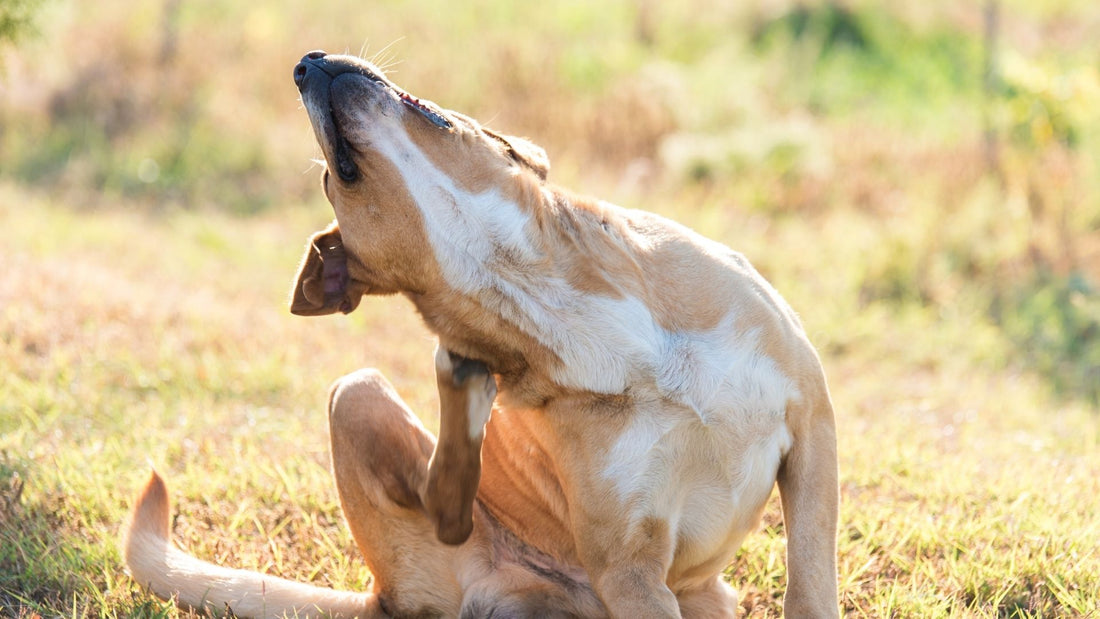Dog dandruff, or scientifically Seborrheic Dermatitis, is relatively common in pets but it is always an unfortunate occurrence when you find their skin is flaking while rustling through their fur. Dog dandruff is most common on their face, back, and flanks. Dandruff can be a signifier for discomfort in your pet and must be treated accordingly.
In this article, we’ll go over the symptoms, possible causes, and treatments of dog dandruff that dog owners can try at home.
Symptoms of Dog Dandruff
If your pet is biting, scratching, or licking you may want to rifle through their fur and see if they have any signs of dandruff. Symptoms of dandruff include itchiness, discomfort, and little white flakes on your dog’s skin and fur.
In more serious cases you will notice hair loss, redness, and even a nasty odor where the flakes are present. Dandruff can cause significant discomfort for your pet, so if you notice any of these symptoms it’s important to begin treating them right away.
Possible Causes of Dog Dandruff
Dandruff can be caused by many things, but mainly the sebaceous glands overproduce and travel to the surface much too quickly causing flaking. This can be caused by a bad diet, certain health conditions, mites, bacterial or fungal infections, or even the weather such as somewhere having low humidity. What’s important is that there are several ways to prevent and treat this skin condition.
Dog Dandruff Treatments at Home
Brushing
Regular brushing and grooming at home can help treat dandruff. Using a brush over your dog’s coat will allow the piled-up flakes to come off and thus give your pet’s fur room to breathe. It will also stimulate the skin and remove debris & oil, so your pup’s skin can get rid of the excess oils naturally and get back to normal.
Diet
Watching what your dog eats can help with dandruff as well, as a healthy diet can provide your dog with the nutrients they need for healthy skin and coat.
Nutrient deficiency is known to be one of the leading causes of dandruff in dogs in fact – many pet owners don’t realize just how much a healthy diet can have an effect on skin oil production.
Making sure to feed your dog a nutritionally balanced diet with plenty of fresh water daily is a great first step to tackling the dandruff problem for any dog.
Omega-3 Supplements
Omega-3 fatty acids can be a great addition to your dog’s daily diet to help relieve dandruff, as it helps your dog’s skin self-regulate its oil production and therefore solve the issue from the source. Having a fatty acid deficiency can make symptoms of dandruff worse. Omega-3 fatty acids are found in fish, seafood, and some plant oils.
Fish oil supplements that contain vitamins, like our Advanced Omega-3 Liquid with Vitamin A, D, and E, help prevent flaking, shedding, and itching by using both omega-3 and essential vitamins for multi health benefits. The combined formula supports immune function and joint health as well as skin & coat health.
If you’re choosing a softgel type fish oil, make sure to use the product made for pets as fish oil capsules made for humans can contain added ingredients that might not be good for dogs and it could be hard to control the right dosage for your dog. Our Advanced Omega-3 Softgels is a safe option with an added Vitamin E. Vitamin E’s anti-inflammatory property helps prevent the omega-3 from oxidizing which keeps it fresh longer.
Humidifier
Using a humidifier can also do wonders, because if it’s the weather that is causing your dog’s glands to overproduce then it will help stop the aggravation and allow your dog’s skin time to regulate. Dry skin is also a common issue that can prompt dandruff, so it is very useful to have the humidifier make the environment more suitable for your dog.
Medicated Shampoo
The last and most proactive method you can try at home is giving your dog a bath with a dandruff shampoo. There are many products out there claiming to be anti-dandruff, but one of the most effective options is the medicated formulas with a clinically proven ingredient like Benzoyl Peroxide.
Benzoyl Peroxide is an antiseptic agent that has been used in trials to treat Sebbhorea, the overproduction of oils that cause a build-up and eventually dandruff.
Medicated shampoos with Benzoyl Peroxide will target the issue at the source and help eliminate the problem, but the percentage of Benzoyl Peroxide also affects the outcome and makes sure it doesn’t strip off the skin barrier.
A veterinary-grade shampoo with 3% Benzoyl is the most effective and safe bet, such as our Benzoyl Peroxide Shampoo or Anti-Dandruff Shampoo. Both products use Benzoyl Peroxide 3% as a key ingredient and contain coat conditioner & Vitamin E to assist in restoring the irritated skin & coat.
Conclusion
Dog dandruff is not something any dog lover wants to see their dog go through, and when we see it causing discomfort in our pet we know it’s time to step up and do something. By using these tips and tricks to help get rid of dandruff we can help our dogs to be happy and healthy with flake-free skin.

